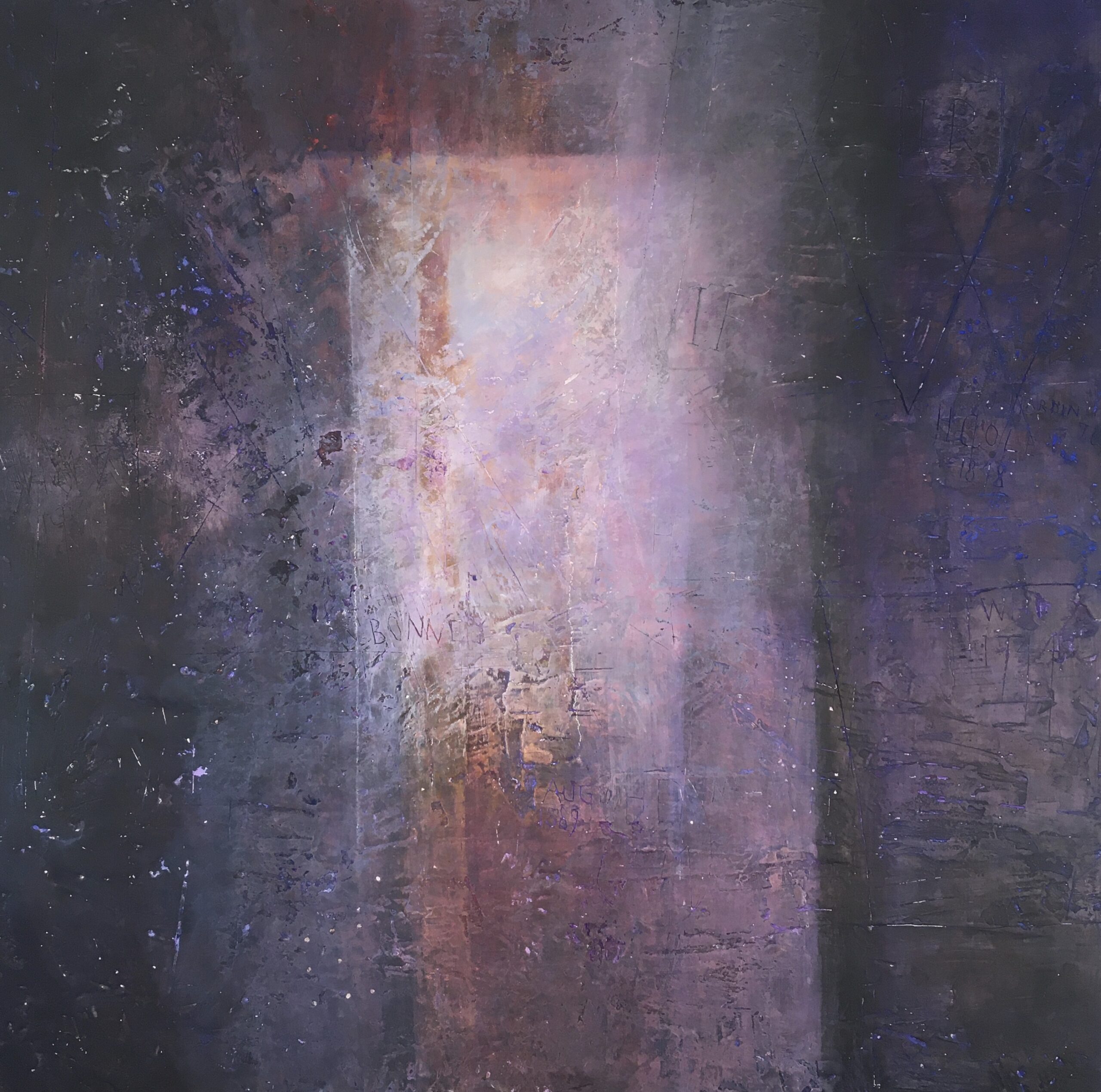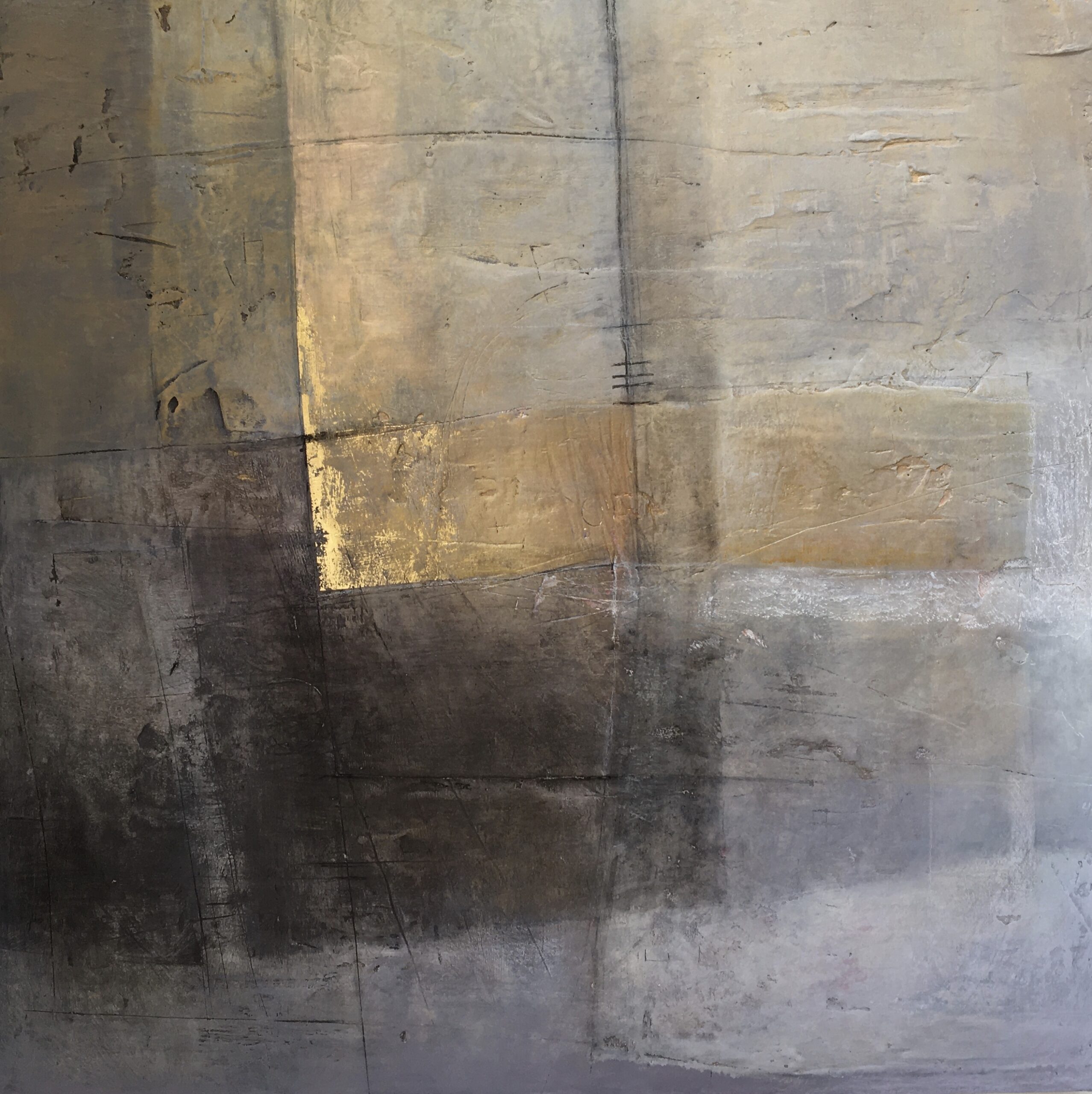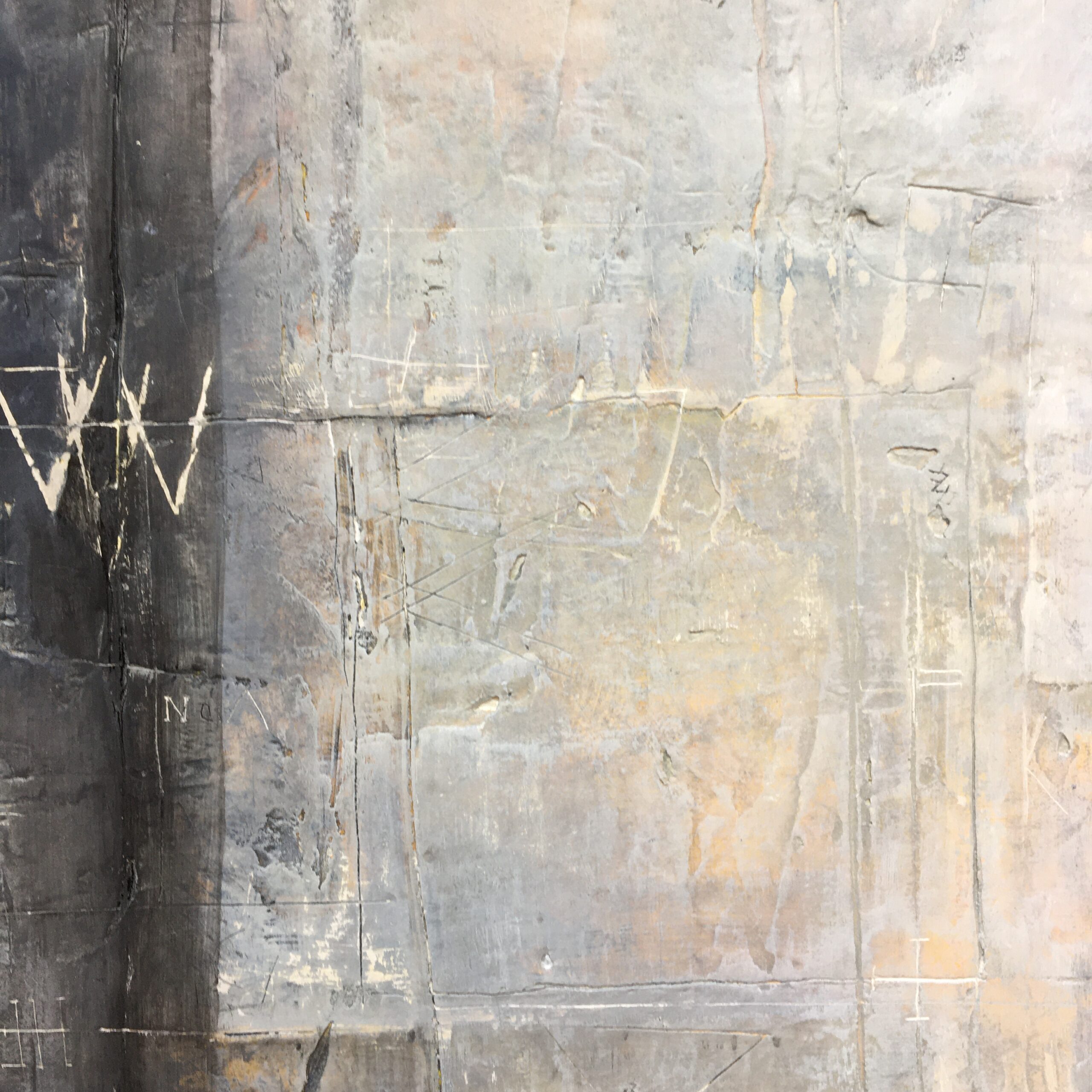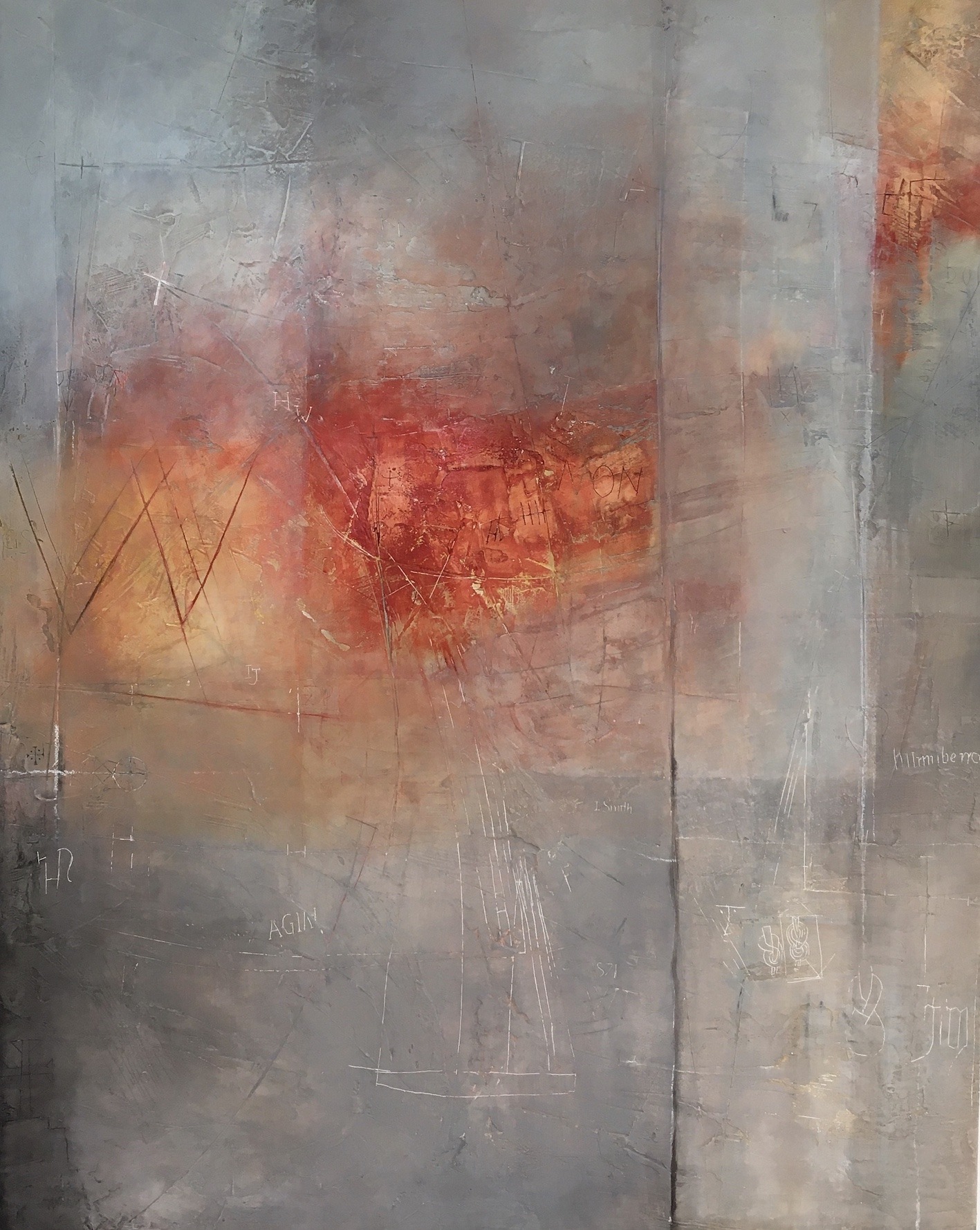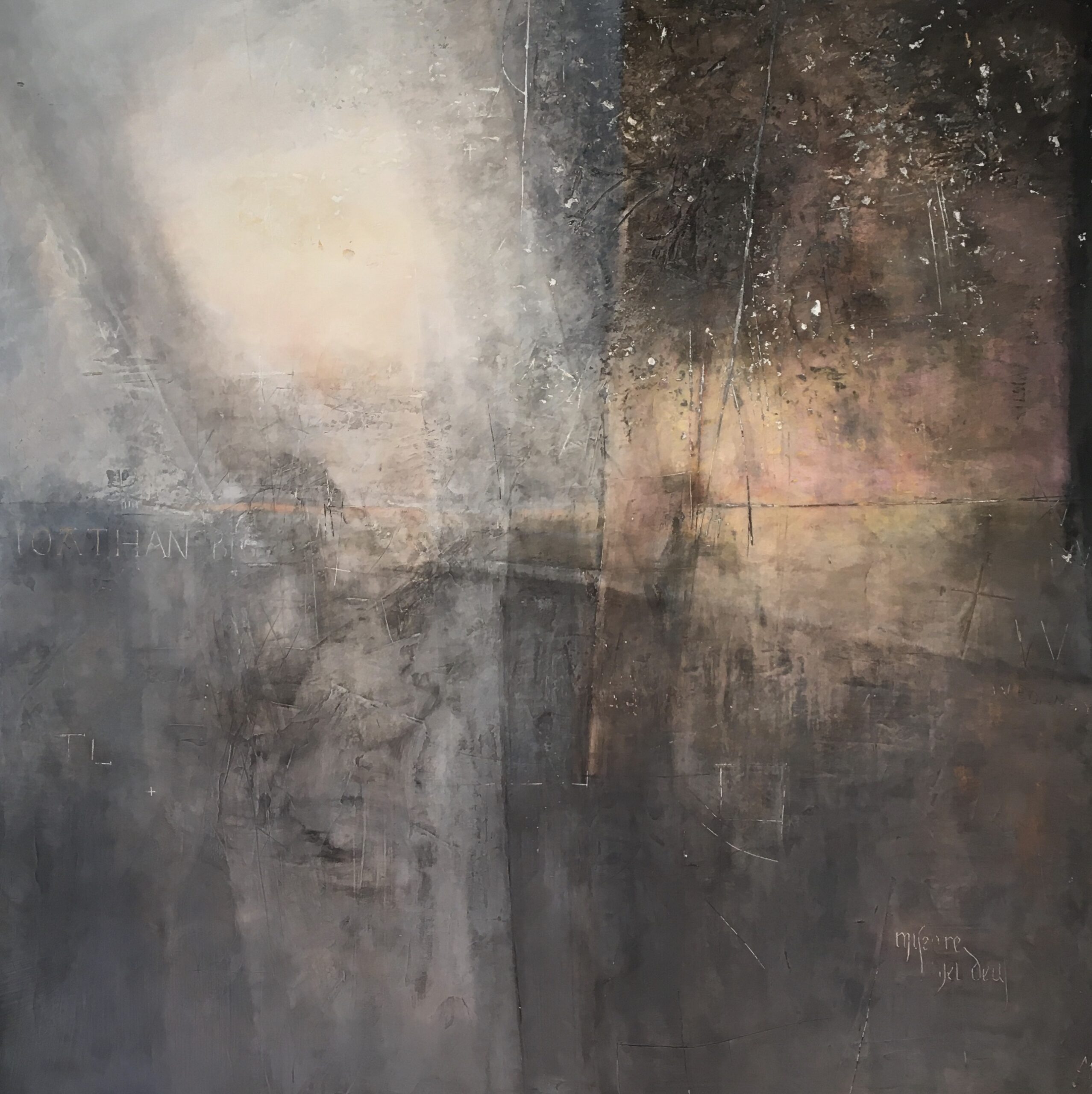“These panels present a compelling encounter between texture and pigment, so that the blocks and currents of brilliant light or dense colouring suffuse a credibly rough and uneven surface, like light or shade on stone, with teasing hints of perspective and slant and vistas around corners. This gives them a quality of invitation: we are beckoned to inhabit, not just to peruse these surfaces. Like St Augustine saying that the divine is not to be looked at but to be lived in, Michèle Griffiths creates images within which to spend time.”
Dr ROWAN WILLIAMS
former Archbishop of Caterbury
writing about Michèle’s solo exhibition:
Darkness into Light at CHICHESTER CATHEDRAL 2021
‘DARKNESS INTO LIGHT’
by writer and Art Critic FRANCES SPALDING June 2021
Excerpts:
Like Bridget Riley, Michèle Griffiths often begins with no specific associations or title in mind, and criteria for judging progress only develop as the work evolves, when sensations begin to indicate the direction that it will take. These criteria, as Riley herself admits, ‘are not attached to anything particular, but when I recognise them in a painting, in certain abstract relationships there, then I feel that I have got something real, that I am on firm ground and can build’.*
These are immersive pictures, inviting us into a seemingly haphazard, non-didactic world. They act as a theatre for the soul.
Full essay:
Darkness and light are words that come readily to hand. They connect with our everyday existence, divided as it is into night and day. But the moment ‘into’ is inserted between these two words, as in the title of this exhibition Darkness into Light, they become conjoined in a way that suggests a relationship less fixed, more mutable.
Michèle Griffiths’ recent paintings deliberately play, not with logic and certainty, but with the possibility of change and movement. She remarks in the catalogue that in Hope the cross near the centre of the painting, imitating an ancient piece of graffiti, can be taken as a religious symbol or as an anchor in the composition. These are, after all, immersive pictures, inviting us into a seemingly haphazard, non-didactic world. They act as a theatre for the soul, offering an opportunity for our own experiences to shape not only our looking but also the content of this art.
These new works are far removed from Griffiths’ previous ‘Prana’ series, a set of serene land- and seascapes that drew on finely adjusted hues and tones to establish the illusion of depth and space. Part of their strong appeal was the sure-footed access they offered the viewer, into an imagined scene, empty, restful, and spacious.
In contrast, this new work exposes the struggle involved in the making of these paintings. The complex process begins with the arbitrary roughening of the surface with a layer of plaster, and from then on layers are steadily built up, rubbed off and reworked, as the painting evolves.
Like Bridget Riley, Michèle Griffiths often begins with no specific associations or title in mind, and criteria for judging progress only develop as the work evolves, when sensations begin to indicate the direction that it will take. These criteria, as Riley herself admits, ‘are not attached to anything particular, but when I recognise them in a painting, in certain abstract relationships there, then I feel that I have got something real, that I am on firm ground and can build’.*
* Bridget Riley, The Eye’s Mind: Bridget Riley: Collected Writings 1965-1999, (London: Thames & Hudson, 1999), p.128
A sense of building is an apt metaphor for Michèle Griffiths’ recent paintings. Not only are there suggestions in some of doors and windows, but in many of them the surface of the picture is so scuffed and scarred that it begins to look like a time-worn wall. Graffiti, as found by the artist in Chichester Cathedral and other churches, is then added, reminding us of the passing waves of human history that attach themselves through these marks to sacred buildings.
The Church invites us to recognise that most were made, not as an act of vandalism but a form of prayer, the double, over-lapping ‘V’ acting as symbol to ward off evil, and the vertical incisions made by the sword of a crusader said to have been completed with a horizontal line across the vertical on their safe return home.
But the most important intensifying ingredient in these paintings is the handling of light and its relation to darkness. It takes on a variety of roles: it seeps through veils of colour or suddenly flares with unexpected brightness; it can soften, bleach, darken, flatten or semi-obscure other colours like a floating mist. In places we can discover that the artist has used iridescent paint, which, as with certain shells, can only be seen when looked at from a certain point of view and which disappears again when we change our position.
The paradox, time and again explored in these paintings, is the relationship between surface and depth, and the way painting can somehow abruptly tip from one to the other. Similarly, these paintings remind us that dark and light can be inverted. After all, light makes visible but can also blind us as to what is there to be seen. Darkness, on the other hand, can become fertile ground. Although the famous opening chapter of St John’s gospel presents light and darkness in stark opposition, the ‘dark night the soul’ is claimed by some to be a part of spiritual progress. Henry Vaughan’s famous poem ’The Night’, takes this paradox further.
But living where the sun
Doth all things wake, and where all mix and tire
Themselves and others, I consent and run
To every mire,
And by this world’s ill-guiding light,
Err more than I can do by night.
There is in God, some say,
A deep but dazzling darkness, as men here
Say it is late and dusky, because they
See not clear.
O for that night! where I in Him
Might live invisible and dim!
His poem begins by reminding us that Nicodemus sought out Christ at night, needing answers to his questions. From then onwards the poem turns the more usual understanding of darkness and light on its head. The two final verses can be read to the left.
Michèle Griffiths paintings tap into an extraordinarily rich cultural history, not least in terms of theological thought, both Christian and Buddhist. In the same way that the use of iridescent paint introduces an unexpected tenderness and intimacy, Griffiths’ titles also open pathways for thought and memory.
An element of personal history lies behind the artist’s choice of title for Transcending Sorrow, in which can be found the most dramatic use of light and dark, but it is also particularly apt title for today’s world, struggling to emerge from a pandemic. Griffiths’ titles add another layer of resonance to these engaging works.
They are in harmony with the time in which we live. In themselves, these paintings are also in harmony with each other, and together form a remarkable unity.


